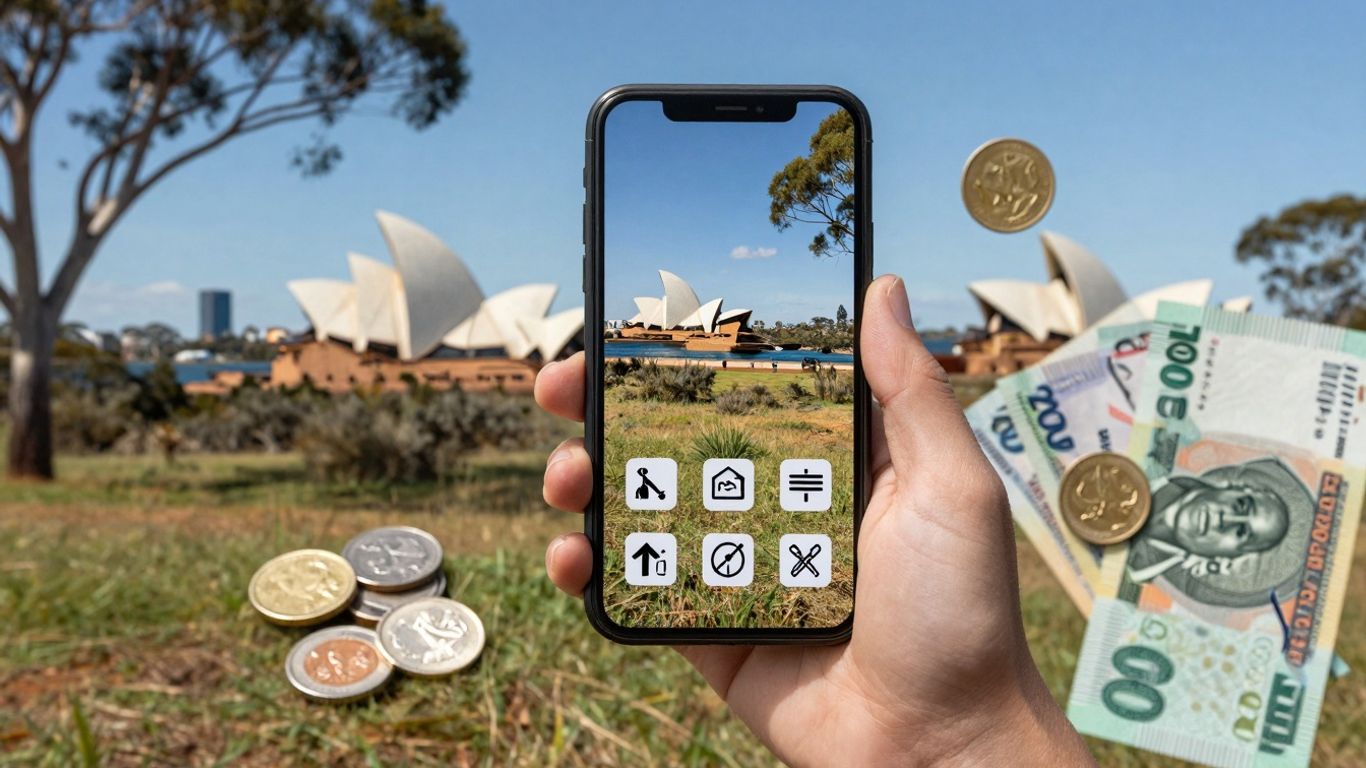If you’re looking to take control of your finances and work towards financial freedom, bucket budgeting might just be the answer. This approach helps you manage your money by dividing it into different categories or ‘buckets’, making it easier to keep track of your spending and savings. In this guide, we’ll break down the concept of bucket budgeting, how to set it up, and tips for long-term success, all tailored for the Australian context.
Key Takeaways
- Bucket budgeting is a practical way to manage your finances by dividing your income into specific categories or buckets.
- Setting up your buckets involves identifying expense categories, allocating your income, and creating a savings bucket.
- Planning your spending and avoiding impulse purchases are essential to sticking to your budget.
- There are various tools available, like budgeting apps and spreadsheets, to help you track your finances effectively.
- Regularly reviewing your budget and celebrating small victories can keep you motivated on your path to financial freedom.
Understanding Bucket Budgeting
What Is Bucket Budgeting?
Bucket budgeting is a way to manage your money by dividing it into different "buckets" for specific purposes. Think of it like using separate bank accounts for different expenses, but with a clear plan for where each dollar goes. It’s a simple and visual method that can help you get a better handle on your finances. Instead of just seeing a lump sum in your account, you see exactly how much you have allocated for rent, groceries, fun money, and savings. This approach makes it easier to track your spending and ensure you’re not overspending in any one area. It’s like the digital version of the old envelope system, but way more convenient.
The Benefits of Bucket Budgeting
Bucket budgeting offers a bunch of advantages:
- Increased Awareness: You become more aware of where your money is actually going. No more wondering where your paycheck disappeared to!
- Better Control: It gives you greater control over your spending habits. When you know how much you have in each bucket, you’re less likely to overspend.
- Simplified Savings: It makes saving easier by allocating a specific bucket just for savings. This helps you reach your financial goals faster.
- Reduced Stress: Knowing exactly where your money is allocated can reduce financial stress and anxiety. It’s all about feeling in control.
Bucket budgeting isn’t about restricting yourself; it’s about making informed choices about your spending. It’s about aligning your money with your values and priorities, so you can live the life you want without constantly worrying about finances.
How Bucket Budgeting Differs from Traditional Methods
Traditional budgeting often involves tracking all your income and expenses in one big list, which can be overwhelming. Bucket budgeting simplifies this by breaking down your finances into manageable categories. Instead of just seeing a total income and total expenses, you see how much you have available in each savings account. This makes it easier to identify areas where you can cut back or save more. Plus, it’s more visual and intuitive, making it easier to stick to your budget in the long run. It’s a more proactive approach, where you allocate your money before you spend it, rather than just tracking where it went afterwards.
Setting Up Your Buckets

Identifying Your Expense Categories
Okay, so you’re keen to get your buckets sorted? Awesome! First things first, you need to figure out where your money is actually going. Grab a pen and paper (or your favourite budgeting app) and start listing everything you spend money on. Don’t miss anything, even that daily coffee! Think about it like this: what are the essential things you need, versus the things you want? This will help you define your buckets.
Here are some common categories to get you started:
- Rent/Mortgage
- Groceries
- Utilities (gas, electricity, water)
- Transport (petrol, public transport)
- Entertainment
- Savings
- Debt Repayments
Allocating Your Income
Right, you’ve got your categories, now it’s time to divvy up your income. This is where the magic happens! A popular method is the 50:30:20 rule, where 50% of your income goes towards needs, 30% towards wants, and 20% towards savings and debt repayment. But honestly, you can adjust this to suit your own situation. If you’re smashing debt, maybe allocate more to that bucket. If you’re living at home and your needs are minimal, pump up that savings bucket!
Here’s an example of how you might allocate a $4,000 monthly income:
| Bucket | Percentage | Amount |
|---|---|---|
| Needs | 50% | $2,000 |
| Wants | 30% | $1,200 |
| Savings/Debts | 20% | $800 |
Remember, this is just a guide. Tweak it until it feels right for you. It’s also a good idea to open separate transaction accounts for each bucket to keep things organised.
Creating a Savings Bucket
Don’t skip this one! Your savings bucket is your future self’s best friend. This isn’t just about squirrelling away money for a rainy day (although that’s important too!). It’s about setting yourself up for financial freedom. Think about your goals: a house deposit, a new car, a holiday, or even just a comfortable retirement. Allocate a portion of your income to this bucket before you start spending on anything else. Treat it like a non-negotiable bill. Consider using a high interest savings account to help your savings grow faster.
It’s easy to put off saving, especially when you’re just starting out. But even small amounts add up over time. The key is to make it a habit and stick to it, even when things get tough. Your future self will thank you for it.
Maximising Your Budgeting Strategy
Planning Your Spending
Nothing throws a spanner in the works of a good budget like impulse buys. Seriously, those sneaky little purchases can really add up and derail your financial goals. Bucket budgeting only works if you actually plan where your money is going before you spend it. Think of it like this: you wouldn’t start a road trip without a map, would you? Same goes for your money!
- Make a shopping list and stick to it. Seriously, no detours down the chocolate aisle!
- Consider doing your grocery shopping online. It’s easier to track how much you’re spending and avoid temptation.
- If you’re going on holiday, set a daily spending limit. Turn it into a game to see how much you can save!
Planning your spending isn’t about restricting yourself; it’s about being intentional with your money so you can actually afford the things that matter most to you.
Avoiding Impulse Purchases
It’s so easy to get caught up in the moment and buy something you don’t really need. Retailers are experts at making you want things! But with a bit of awareness, you can resist the urge and keep your budget on track. One thing you can do is to plan your spending in advance.
- Implement a ’24-hour rule’. If you see something you want, wait 24 hours before buying it. You might find you don’t want it after all.
- Unsubscribe from marketing emails. Seriously, those tempting offers are designed to make you spend!
- Avoid browsing online stores when you’re bored or stressed. It’s a recipe for disaster!
Setting Realistic Financial Goals
Dreaming big is great, but your financial goals need to be grounded in reality. Otherwise, you’ll just get discouraged and give up. Start small, be specific, and celebrate your progress along the way. It’s also okay to say no to plans if you’re saving for something big. Be honest with your mates about your financial goals.
- Short-term goals: Saving for a weekend getaway or paying off a small debt.
- Mid-term goals: Saving for a house deposit or a new car.
- Long-term goals: Investing for retirement or paying off your mortgage.
Here’s an example of how to set a realistic financial goal:
| Goal | Amount | Timeframe | Action Plan |
|---|---|---|---|
| Holiday Fund | $3,000 | 12 months | Save $250 per month from your ‘Fun’ bucket. |
Tools and Resources for Bucket Budgeting

Budgeting Apps and Software
Okay, so you’re keen on bucket budgeting, but spreadsheets give you the shivers? No worries! There’s a stack of budgeting apps and software designed to make life easier. Many of these let you create virtual ‘buckets’ and automatically allocate your income. Some even link directly to your bank accounts, so you can see where your money’s going in real-time. It’s like having a personal budgeting assistant right in your pocket. Just have a look around and see what works for you, there are free trials for most of them.
Using Spreadsheets Effectively
Don’t knock spreadsheets until you’ve tried them! Sure, they might seem a bit old-school, but they’re super customisable. You can set up your own bucket system, track your spending, and create charts to visualise your progress. Plus, there are heaps of free templates online to get you started. If you’re a bit of a control freak (like me!), spreadsheets let you get right into the nitty-gritty of your finances. Here’s a few things you can do:
- Create a tab for each bucket (e.g., ‘Rent’, ‘Groceries’, ‘Fun Money’).
- Use formulas to automatically calculate your income allocation.
- Track your spending each week and compare it to your budget.
Spreadsheets are great because they’re free and you can really tailor them to your specific needs. Don’t be afraid to experiment with different layouts and formulas until you find something that clicks.
Financial Counselling Services
Feeling a bit lost? That’s totally okay! Sometimes, you just need a bit of expert advice. There are free financial counselling services available all over Australia. These services can help you create a budget, manage debt, and get back on your feet. They can also help you understand your rights and responsibilities when it comes to money. Don’t be shy about reaching out – they’re there to help, and it’s completely confidential. It’s good to get some [high interest savings](high interest savings) advice from a professional.
Common Challenges in Bucket Budgeting
Bucket budgeting, like any budgeting method, isn’t without its hurdles. It takes discipline and a bit of tweaking to really make it work for you. Let’s look at some common issues you might face and how to tackle them.
Sticking to Your Budget
The biggest challenge is often simply sticking to the allocated amounts in each bucket. It’s easy to overspend in one area, especially when unexpected social events pop up or that new gadget catches your eye.
- Track your spending religiously. Use a notebook, a spreadsheet, or an app – whatever works best for you.
- Set up alerts on your bank accounts to notify you when you’re nearing your bucket limit.
- Be honest with yourself about your spending habits. If you know you’re prone to impulse buys, try to avoid situations that trigger them.
Adjusting Your Buckets as Needed
Life changes, and your budget needs to change with it. A bucket setup that worked perfectly last year might not be suitable anymore. Maybe your rent went up, or you’ve taken on a new hobby. It’s important to be flexible and adjust your buckets accordingly. Don’t be afraid to re-evaluate your spending habits every few months.
- Review your budget at least quarterly.
- Consider using historical data to predict future expenses.
- Be prepared to make tough choices. If one bucket needs more funds, you might have to reduce the allocation to another.
Dealing with Unexpected Expenses
This is where the savings bucket really shines. But even with a healthy savings buffer, unexpected expenses can throw a wrench in your plans. Car repairs, medical bills, or a broken washing machine – these things happen. The key is to be prepared and have a plan in place.
- Prioritise building an emergency fund. Aim for at least 3-6 months’ worth of living expenses.
- Consider insurance options to cover potential risks.
- If you do need to dip into your savings, make a plan to replenish it as soon as possible.
It’s important to remember that bucket budgeting is a tool, not a prison. Don’t get discouraged if you slip up or need to make adjustments. The goal is to gain control of your finances and work towards your financial goals, not to create unnecessary stress.
Achieving Financial Freedom with Bucket Budgeting
Bucket budgeting isn’t just about managing your money; it’s about setting yourself up for a future where money worries are a thing of the past. It’s about building a life where you have choices and control. Let’s look at how this approach can help you achieve genuine financial freedom.
Building an Emergency Fund
Life throws curveballs, and having an emergency fund is like having a safety net. It’s there to catch you when unexpected expenses pop up – like a sudden car repair or a trip to the vet. Bucket budgeting makes it easy to prioritise building this fund. Allocate a portion of your income to a dedicated ‘Emergency’ bucket. Aim for at least 3-6 months’ worth of living expenses. This way, you won’t have to dip into your other buckets or, worse, rack up debt when something unexpected happens. Think of it as your financial peace of mind.
Investing for the Future
Once you’ve got your emergency fund sorted, it’s time to think about the future. Investing can seem daunting, but it doesn’t have to be. Bucket budgeting can help you allocate funds to a separate ‘Investment’ bucket. Start small, do your research, and consider talking to a financial advisor. Whether it’s shares, property, or superannuation, investing is about growing your wealth over time. It’s about making your money work for you, so you can achieve your long-term financial goals, like early retirement or that dream holiday. Consider opening a high interest savings account to help grow your savings faster.
Tracking Your Progress
It’s easy to lose sight of your goals if you’re not tracking your progress. Bucket budgeting makes it simple to see where your money is going and how close you are to achieving your financial goals. Regularly review your buckets and spending habits. Are you sticking to your budget? Are there areas where you can cut back? Are your investments performing as expected? Tracking your progress will help you stay motivated and make adjustments as needed. It’s about staying in control and making informed decisions about your money. Here’s a simple table to help you visualise your progress:
| Bucket | Target Amount | Current Amount | Progress (%) |
|---|---|---|---|
| Emergency Fund | $10,000 | $5,000 | 50% |
| Investments | $5,000 | $2,000 | 40% |
| Holiday | $3,000 | $1,000 | 33% |
Bucket budgeting is more than just a budgeting technique; it’s a pathway to financial freedom. By building an emergency fund, investing for the future, and tracking your progress, you can take control of your finances and achieve your long-term goals. It’s about creating a life where money is a tool, not a source of stress.
Tips for Long-Term Success
Reviewing Your Budget Regularly
Regularly reviewing your budget is essential for long-term financial success. Life changes, and your budget needs to keep up. Maybe you got a pay rise, or perhaps your expenses have shifted. A monthly check-in can help you spot any issues before they become big problems. I like to set aside an hour each month, grab a cuppa, and go through my bank statements. It’s not the most exciting task, but it’s worth it.
Here’s a simple schedule I try to stick to:
- Weekly: Quick glance at spending to stay on track.
- Monthly: Detailed review of income, expenses, and savings.
- Annually: Comprehensive assessment of financial goals and adjustments to the budget.
It’s easy to fall off the waggon if you don’t keep an eye on things. Life gets busy, and before you know it, you’re back to old habits. Regular reviews help you stay accountable and make sure you’re still heading in the right direction.
Celebrating Small Wins
Budgeting can feel restrictive, so it’s important to acknowledge your progress. Did you stick to your grocery budget this week? Treat yourself to a coffee! Did you manage to save an extra $50 this month? Put it towards something you enjoy. Setting financial goals and reaching them, no matter how small, can be a great motivator.
Here are some ways to celebrate:
- Enjoy a guilt-free night out (within budget, of course!).
- Buy that book you’ve been wanting.
- Plan a small weekend getaway.
Staying Motivated and Accountable
Staying motivated with a budget can be tough. Find ways to keep yourself engaged. Maybe that’s using a budgeting app with fun visuals, or perhaps it’s finding a friend to be your accountability buddy. Talk about your goals, share your struggles, and celebrate each other’s successes. Remember why you started budgeting in the first place. Was it to buy a house, pay off debt, or retire early? Keep that goal in mind, and it will help you stay on track. It’s also important to be kind to yourself. Everyone makes mistakes. If you overspend one month, don’t beat yourself up about it. Just learn from it and get back on track the next month. Discipline is key to success.
Wrapping It Up
So there you have it. Bucket budgeting isn’t just a fancy term; it’s a practical way to manage your money without losing your mind. By splitting your income into different buckets, you can keep track of your spending and save for the things that really matter. Sure, it takes a bit of discipline, but the payoff is worth it. You’ll feel more in control of your finances, and that sense of freedom is priceless. Remember, it’s all about finding a system that works for you. So give it a go, adjust as needed, and watch your financial worries start to fade away.
Frequently Asked Questions
What is bucket budgeting?
Bucket budgeting is a way to manage your money by dividing it into different categories, or ‘buckets’. Each bucket is for a specific purpose, like bills, groceries, or savings.
How do I start bucket budgeting?
To start bucket budgeting, first figure out your income and expenses. Then, create buckets for different spending categories and decide how much money goes into each one.
What are the benefits of using bucket budgeting?
Bucket budgeting helps you keep track of your spending, avoid overspending, and save money. It makes your financial goals clearer and helps you plan for the future.
Can I adjust my buckets?
Yes! You can change your buckets or the amount of money in each bucket whenever you need to. It’s important to be flexible and adjust as your financial situation changes.
What should I do if I run out of money in a bucket?
If you run out of money in a bucket, you can’t borrow from another bucket. You’ll need to wait until you get paid again or adjust your spending habits.
How can I stay motivated with bucket budgeting?
To stay motivated, set small goals and celebrate your achievements. Regularly review your budget and remind yourself of your financial goals to keep yourself on track.





